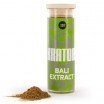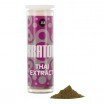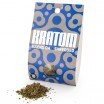Don't have an account?
Register NowYou have to add to cart at least 5 bottles or any program to make checkout.
- BlogThe Effects Of Kratom
The Effects Of Kratom
Published: January 2nd, 2017
Categories:
Plants and Seeds
Kratom provides a combination of both stimulant and sedative effects. The stimulatory phase is usually faster and shorter than the sedation.
These effects may vary from one person to another based on a variety of factors. For most people, kratom has an effect on mood and energy, lowering anxiety level and making the user feel happy, strong and active.
At the same time the alkaloids contained in kratom are potent calming agents, as their dominant analgesic effects are similar to opiate. Thai workers use kratom to get through their working day in tough conditions.
The effects come on within five to ten minutes after use, and they can provide feelings of empathy, euphoria, increased sociability and talkativeness for several hours. Kratom does not cause a psychedelic activity, while the biphasic behaviour of its chemical compounds translate in a stimulating and euphoric drug at lower doses, becoming a sedative medicine at higher doses.
THE ALKALOID PAINKILLER CHANNEL
Kratom’s tree leaves contain two mitragynine alkaloids. These phytochemicals bind with some of our body’s opiate receptors, causing similar effects such as pain reduction. That’s why kratom can substitute traditional painkillers. Unlike opiates, kratom’s mitragynines don’t drive to a severe physical dependency and they don’t cause respiratory depression with death risks.
On the opposite, their effects can help reducing the symptoms of opiate withdrawal. The strong analgesic activity of the chemical compounds found in kratom makes it a perfect botanical remedy for chronic pain and local anaesthesia.
Another effect of mitragynine, which can be beneficial in certain pathological conditions, is a reduction in smooth muscle tone.
THE ADRENALINE MOOD-STABILIZING CHANNEL
In most users, kratom’s effects on the opioid receptors is beneficial against depression, stress and anxiety. In addition to the action on our alkaloid neuronal receptors, the phytochemical compounds of this herb can also bind to our adrenaline receptors, thus modulating anxiety and mood.
These effects don’t drive too far in depressing or energizing mood and perceptions, instead causing a pretty stable and enhanced mood. Some people use kratom both as a mood stabilizer and an attention enhancer.
SOME SIDE EFFECTS
Kratom’s side effects are minor and they can vary from person to person. The change in the ability to focus is considered normal, just like eventual dry mouth, pupil pinning, increased urination, loss of appetite, and constipation.
In most cases and with normal doses, mitragynine does not cause nausea or vomiting. Higher doses can cause nausea, prolonged sleep, increase in perceived body temperature, sweat. Mild depressed mood can occur during, or after, the assumption.
Similarly to alcohol, a hangover can occur, possibly with a headache. Mild to strong withdrawal symptoms upon cessation of heavy use can also occur. Contaminated products can lead to other adverse effects.
DIFFERENT STRAINS, DIVERSE EFFECTS
There are several strains of kratom on earth, and their genetic differences are responsible for different effects. Since the effect of kratom can vary dramatically, it is fundamental to understand the characteristics of the particular strain you are consuming.
People looking for the energizing part of kratom benefits will pick a Thai or Maeng Da variety, just like the manual labourers in Thailand always used to do. These strains have an uplifting effect that is considered more potent, long-lasting, nevertheless smoother than coffee.
The potency of Thai kratom reveals also in its sedating effects, yet Borneo and Indonesian strains are considered more suitable for treating insomnia. Patients looking for powerful, long-lasting pain relief usually pick Bali, Indonesian, Malaysian or Maeng Da strains.










